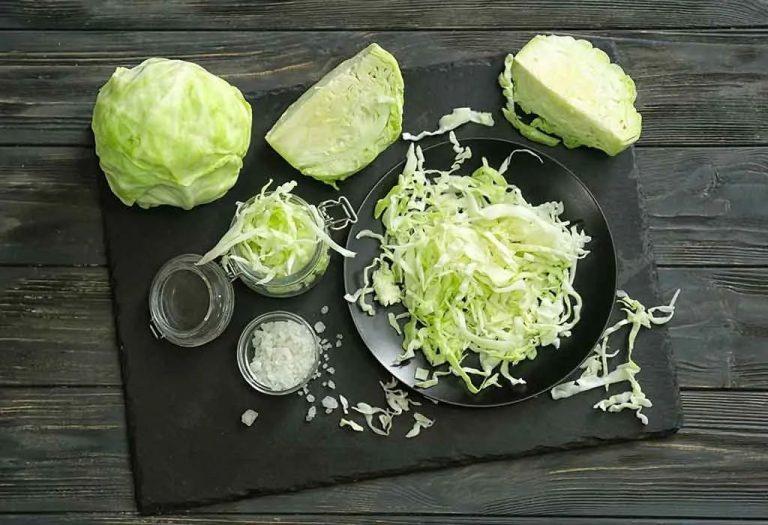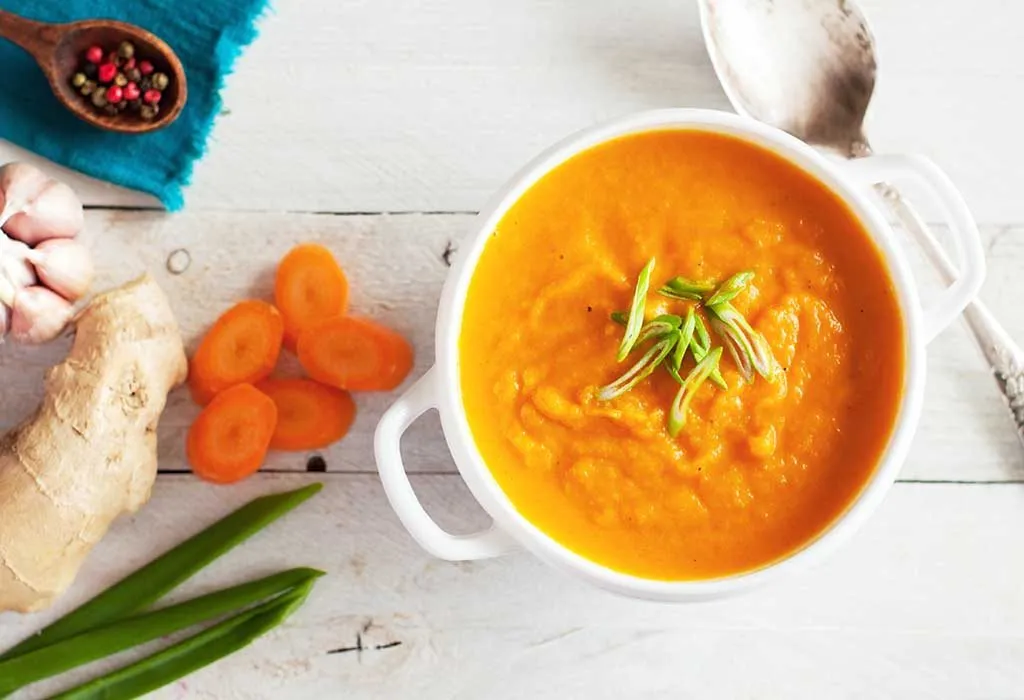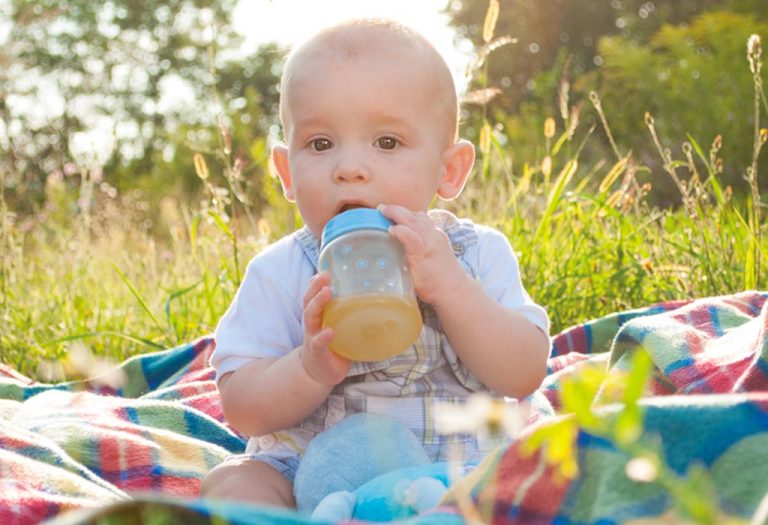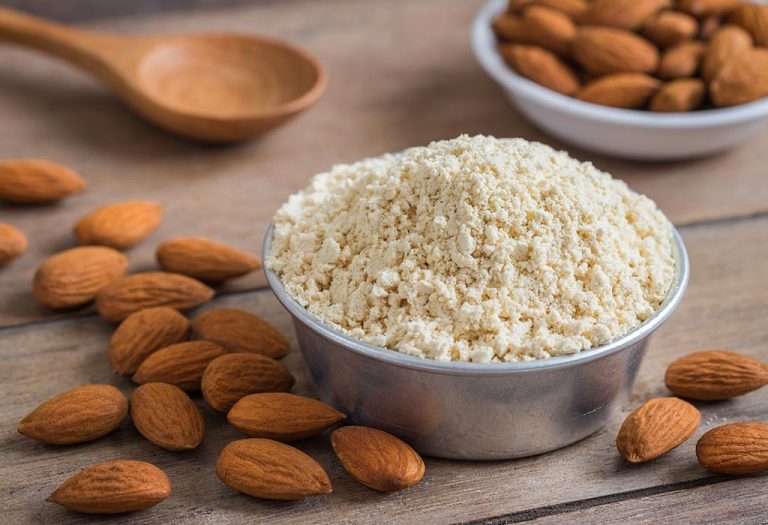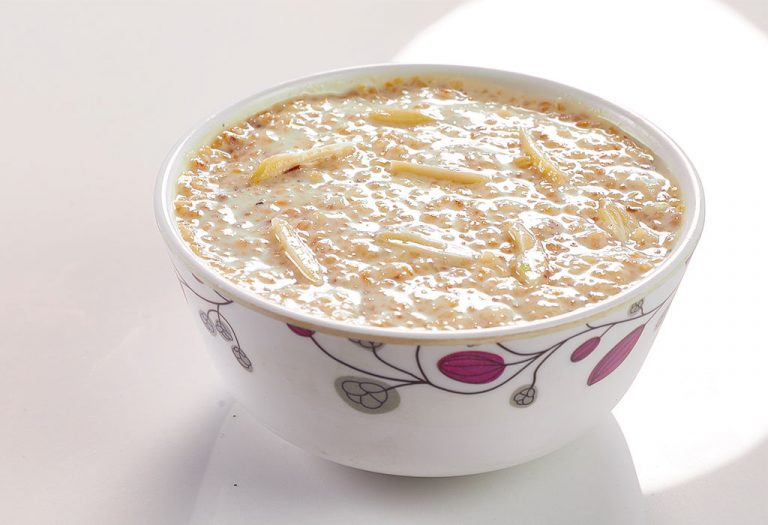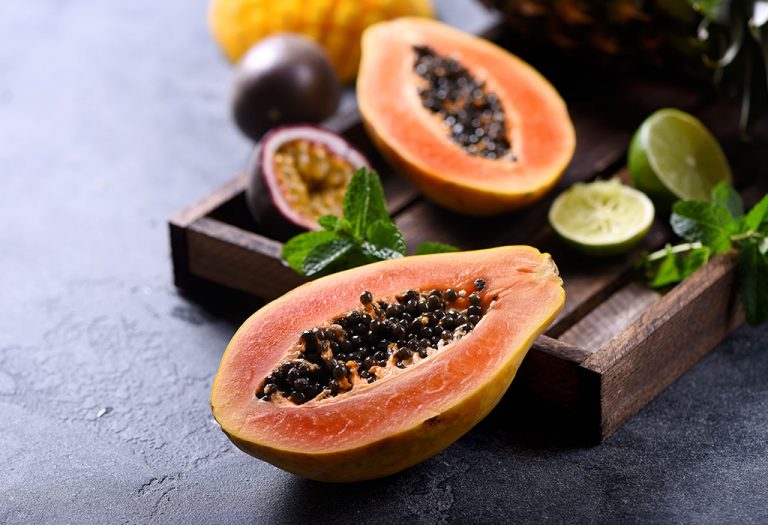Cabbage for Babies – Health Benefits, Side-Effects and Recipes
Cabbage is a vegetable of the cruciferous vegetable family and a good source of various nutrients. Cabbage is widely consumed in over the world in various forms: it is included in soups, khichadi, and mixed veggies and even consumed raw. Cabbage also goes into soups and dishes that are simmered for babies. As an adult, cabbage must be a part of your diet and you must be eating it every week or every alternate week, but when it comes to your little one, you must be thinking twice before including it in his diet. While cabbage is very nutritious, it is also known to cause gas. If your baby has started on solids and you’re thinking of feeding him cabbage, find out when is the right time to introduce it. Also, learn about the health benefits of cabbage for babies.
Nutritional Value of Cabbage
Cabbage comes with a variety of essential nutrients that do not vary too much even when the type of cabbage varies. The most common types of cabbage are green, red cabbage, white, spring greens and napa cabbage. Since the most commonly consumed type is the green cabbage this nutritional table is based on it. Here is the nutritional profile of one cup (100g) of cabbage according to the U.S. Department of Agriculture (1).
| Nutrient | Amount |
| Energy | 23 Kcal |
| Carbohydrate | 4.13g |
| Dietary fibre | 1.42g |
| Water | 92.57g |
| Calcium | 48mg |
| Sodium | 8mg |
| Potassium | 196 mg |
| Magnesium | 15mg |
| Phosphorus | 33 mg |
| Vitamin C | 37.5mg |
| Vitamin A | 80IU |
| Vitamin K | 108.7 µg |
Table Source: Usda.gov
Is Cabbage Good for Babies?
Cabbage can be a healthy addition to a baby’s diet, as it contains vitamins, minerals, and fiber. However, because it’s a cruciferous vegetable, it may cause gas or digestive discomfort in some babies. As with any new food, it’s best to introduce cabbage in small amounts and watch for any adverse reactions.
When to Introduce Cabbage to Babies?
Cabbage can be introduced to babies as soon as they turn 8 months of age. Just like all the solids you feed them around this age, cabbage should also be cooked well and given in pureed form so that the baby can easily swallow and digest it. If you’re worried that your baby will have gas on eating cabbage, then don’t include the large rib that separates the cabbage down the middle in the dishes you prepare for your little one. Ideally, steam the cabbage and mash it up with other vegetables so they are not leafy and crunchy when your baby takes a bite.
Benefits of Cabbage for Babies
Cabbage is high in fibre and all the essential nutrients, making it a superfood for all age groups. Therefore the answer to the question can babies eat cabbage is yes! Here are the benefits of cabbage for babies:
1. Good for Digestive Health
Cabbage is an excellent source of dietary fibre which is essential for a good bowel movement. This helps eliminate toxins from building up in the gut and prevents constipation in babies. Cabbage also contains a compound called glucosinolates, which can be hydrolyzed by certain bacteria in the intestine to use prebiotics (2). Prebiotics are essential for maintaining the microbial flora in the gut.
2. Good for the Heart
As per studies, people who consume steamed vegetables regularly from the Brassica family which includes cabbage, enjoy the cardioprotective benefits of the vegetable (3). It is found that the compound glucosinolate is responsible for a reduction in inflammation and oxidative stress in the body. These effects are essential in promoting good heart health which is beneficial in the long run.
3. Strengthens the Immune System
The presence of compounds known as anthocyanins in high quantities, especially in red cabbage, is known to have immunomodulatory properties, which have a great influence on the immune system. The same compound has antioxidants and anti-inflammatory properties, which help boost immunity (4). The better bowel movement also ensures there’s lesser inflammation in the digestive tract which leads to improved immunity.
4. Rich in Vitamins
Cabbage is a source of vitamin B6, which plays a vital role in energy metabolism and supports the nervous system’s normal function. It also contains vitamin K, essential for proper blood clotting processes. Additionally, cabbage is high in vitamin C, which is necessary for collagen production, contributing to skin elasticity and health, as well as aiding in the proper function of bones, muscles, and blood vessels. The vitamin A content, derived from beta-carotene, is beneficial for maintaining healthy vision.
5. Therapeutic Properties
Cabbage is valued in traditional medicine for its antioxidant and anti-inflammatory properties. It has been used to address various health conditions, including gastritis, peptic ulcers, duodenal ulcers, and irritable bowel syndrome. Cabbage leaves are also believed to aid in wound healing and help with mastitis. A study in the Journal of Bioscience, Biotechnology, and Biochemistry identified high levels of lysophosphatidic acid (LPA) in cabbage leaves, which plays a crucial role in the wound healing process (5).
Side Effects of Consuming Too Much Cabbage
While cabbage has plenty of health benefits, it can also have some side effects for little ones as their immune system is still developing. Here are some side effects that your little one may experience on eating cabbage:
1. Flatulence
This is one of the most common side effects of eating cabbage in both adults and children. Gas in babies can cause discomfort and pain and get much worse if your little one has colic. Since all varieties of cabbage are known to cause gas, it should be introduced carefully.
2. Allergies
Food allergies are common for all babies and although cabbage allergy is rare, if you have a genetic history of allergies to vegetables in the Brassica family such as cabbages, kale, and broccoli there’s a good chance your baby can have it as well. In such a case, it’s essential to consult the paediatrician before feeding cabbage to your little one.
3. Suppress the Functioning of the Thyroid Hormone
Raw cabbages, along with a few other vegetables in their raw form, can interfere with iodine absorption and suppress the functioning of the thyroid gland. This can be highly detrimental to the mental development and growth of your baby. Therefore avoid feeding raw cabbage to your baby.
4. Affect the Development of the Baby
Cabbage, along with a few other vegetables, has the enzyme thiaminase, which can break down thiamin (Vitamin B1), making it inactive. Vitamin B1 is also an essential nutrient for the proper physical and mental development of babies. However, cooking baby cabbage can destroy the enzyme and is, therefore, a strong reason not to feed cabbage to your baby in the raw form.
5. Anti-Mineral Properties
Cabbage is also a source of oxalic acid, which is an inorganic salt that can bind with essential minerals such as calcium, rendering them insoluble. When they become insoluble, they are no longer available for absorption by the body. Therefore, avoid giving too much cabbage to your baby. Moderation is the key to keeping it at healthy levels.
6. Blue Baby Syndrome
The blue baby syndrome is characterized by pale skin and lips that turn blue. It occurs when the haemoglobin in the blood is not able to supply sufficient oxygen to the tissues in the body, turning them blue. Consumption of vegetables high in nitrates can cause this condition in babies. While all cabbages have nitrates, the Chinese cabbage has been strongly associated with the condition, therefore, avoid this variety when you’re feeding your baby.
7. Interference With Medication
Cabbage contains vitamin K, which plays a role in blood clotting. This could potentially interfere with certain medications like blood thinners. For babies who require medication for a medical condition, it’s important to consult with a healthcare provider before adding cabbage to their diet to ensure it does not adversely affect medication efficacy.
8. Risk of Choking
Cabbage, especially when served raw, can pose a choking hazard to young children. Its fibrous texture may be difficult for babies to chew and swallow. To minimize the risk, always ensure cabbage is cooked and cut into small, manageable pieces before offering it to babies. Additionally, it’s crucial to supervise them during meals to ensure safe consumption.
Healthy Cabbage Recipes for Babies
If your baby isn’t allergic to cabbage and experiences no side effects on eating cabbage, then you can feed him cabbage without worries. Here are four cabbage recipes that are perfect for introducing them to the vegetable:
1. Cabbage and Carrot Puree
Carrot and cabbage puree is the simplest recipe to get your baby started on cabbages without having to worry about gas. Served as a midday snack, it is tasty and adds the sweetmeats and mildness of the carrot to balance the cabbage.
Ingredients
- ½ cup chopped cabbages
- ½ cup chopped carrots
- A small pinch of pepper
- One teaspoon of unsalted butter
- A small pinch of salt
Method
- Cook the two vegetables together in the butter.
- Once they are cooked well and cool down, blend them.
- Serve in pureed form.
2. Cabbage and Lentil Soup
This is a good, tasty snack for your toddler who is used to eating cabbages.
Ingredients
- 4 cups of mixed vegetables of your choice
- 1 cup chopped onions
- 1 28 oz canned tomatoes (peeled)
- ½ cup chopped cabbage
- 2 cups cooked green lentils
- ½ tablespoon minced garlic
- 1 tablespoon basil
- Virgin olive oil
- Salt and pepper to taste
- Water
Method
- Heat the olive oil in a pan and add onions and fry until golden brown.
- Add in the basil and garlic and cook until it turns aromatic.
- Add in the cabbage, vegetables, and tomatoes, and water and boil.
- Let it simmer for 25-30 minutes until it is all mushy and the cabbage is tender.
- Add in the lentils and simmer for 20 more minutes.
- Allow the mix to cool and blend it until it reaches a soupy consistency.
- Add salt and pepper for taste and mix well. Serve warm.
3. Cabbage and Potato Mash
This creamy cabbage and potato mash makes a great side dish for toddlers and can be a nutritious snack.
Ingredients
- 1 cup chopped cabbage
- 1 large potato, peeled and diced
- 1/2 cup milk (or milk substitute)
- 1 tablespoon unsalted butter
- A pinch of salt
Method
- In a saucepan, add the cabbage and potatoes. Cover with water and bring to a boil.
- Reduce heat and simmer for 20-25 minutes until the potatoes and cabbage are tender.
- Drain the water and return the vegetables to the saucepan.
- Add the milk, butter, and a pinch of salt.
- Mash the mixture with a potato masher or fork until smooth.
- Serve warm to your baby or toddler.
4. Cabbage and Chicken
This is a high-protein baby food that combines cabbage with chicken, providing a balanced meal for your little one.
Ingredients
- 1 cup chopped cabbage
- 1/2 cup diced chicken breast
- 1/2 cup chicken broth or water
- 1/2 cup chopped carrots
- 1/2 tablespoon olive oil
Method
- In a saucepan, heat the olive oil over medium heat.
- Add the chicken and cook until it’s no longer pink, about 5-7 minutes.
- Add the cabbage, carrots, and chicken broth. Bring to a boil.
- Reduce heat and let it simmer for 15-20 minutes, until the vegetables are soft.
- Remove from heat and let it cool slightly.
- Blend the mixture in a blender or food processor until smooth.
- Serve warm to your baby.
How to Prepare Cabbage for Baby-led Weaning?
Introducing cabbage into your baby’s diet through baby-led weaning is a great way to encourage self-feeding and exploring different textures and flavors. Here are some methods to prepare cabbage for baby-led weaning at different age milestones.
For 6+ Months
At this age, babies are just starting to explore solid foods, so it’s important to prepare cabbage in a way that is soft and easy to handle.
- Consider steaming or boiling cabbage until it is tender enough for babies to gum or mash.
- Cut the cabbage into pieces that are easy for your baby to grasp, such as long strips or sticks.
- Always ensure the pieces are not too small to avoid choking hazards.
For 8 to 9+ Months
As babies gain more motor skills and their teeth start to come in, they can handle a greater variety of textures.
- Cabbage can still be served steamed or boiled, but you can also introduce lightly sautéed cabbage with a softer texture.
- Cut the cabbage into manageable pieces, such as thicker sticks or small wedges.
- At this stage, babies might enjoy mixing cabbage with other foods, like soft-cooked vegetables or mashed potatoes.
For 12+ Months
By this age, most babies have developed a better pincer grip and can handle more complex textures.
- You can offer cabbage in a variety of ways, including as part of a mixed dish, with other vegetables, or with grains like rice.
- You can cut the cabbage into smaller chunks or use it to make simple wraps or roll-ups.
- If your baby has a strong chew, you can even introduce lightly sautéed or roasted cabbage for a new texture.
- Always continue to monitor for safety and adjust preparation based on your baby’s chewing skills and preferences.
FAQs
1. Can cabbage cause skin rashes in babies?
While it’s rare, cabbage can cause skin rashes or other allergic reactions in babies with sensitivities. If you notice redness, hives, or irritation after your baby consumes cabbage, it might be an allergic response.
2. Does cabbage affect iron absorption in babies?
Cabbage contains compounds like oxalic acid, which could potentially reduce iron absorption. This effect is generally more relevant in large quantities or with consistent consumption. If iron absorption is a concern, ensure your baby is getting enough iron-rich foods, and avoid excessive amounts of cabbage in their diet.
3. Is cabbage safe for babies with a family history of thyroid issues?
Cabbage contains goitrogens, substances that can interfere with thyroid function, particularly in raw form. If there’s a family history of thyroid issues, it’s best to cook cabbage thoroughly before feeding it to your baby. Always discuss any concerns with your pediatrician to ensure safe dietary choices for your baby.
Cabbages are great foods to include in your baby’s diet once they start on solids. It’s essential to feed only cooked cabbage and avoid raw forms. Most cabbages are suitable; however, green and red cabbage for baby is better from a nutritional and safety standpoint.
References/Resources:
1. Cabbage, cooked, boiled, drained, without salt; Food Data Central; U.S. Department of Agriculture; https://fdc.nal.usda.gov/fdc-app.html#/food-details/169976/nutrients
2. Li. F, Hullar. M, Schwarz. Y, Lampe. J; Human Gut Bacterial Communities Are Altered by Addition of Cruciferous Vegetables to a Controlled Fruit- and Vegetable-Free Diet (The Journal of Nutrition); National Library of Medicine; https://www.ncbi.nlm.nih.gov/pmc/articles/PMC2728691/; September 2009
3. Blekkenhorst. L, Sim. M, Bondonno. C, Bondonno. N, et. al.; Cardiovascular Health Benefits of Specific Vegetable Types: A Narrative Review (Nutrients); National Library of Medicine; https://www.ncbi.nlm.nih.gov/pmc/articles/PMC5986475/; May 2008
4. Peluso. I, Raguzzini. A, Catasta. G, Cammisotto,. V, et. al.; Effects of High Consumption of Vegetables on Clinical, Immunological, and Antioxidant Markers in Subjects at Risk of Cardiovascular Diseases (Oxidative Medicine and Cellular Longevity); National Library of Medicine; https://www.ncbi.nlm.nih.gov/pmc/articles/PMC6196889/; October 2018
5. Tanaka. T, Horiuchi. G, Matsuoka. M, Hirano. K, Tokumura,. A, et. al.; Formation of lysophosphatidic acid, a wound-healing lipid, during digestion of cabbage leaves (Bioscience, Biotechnology, and Biochemistry); National Library of Medicine; https://pubmed.ncbi.nlm.nih.gov/19502739/; June 2009
6. Cabbage; NutritionFacts.org; https://nutritionfacts.org/topics/cabbage/
7. Dolan. L, Matulka. R, Burdock. G; Naturally Occurring Food Toxins (Toxins); National Library of Medicine; https://www.ncbi.nlm.nih.gov/pmc/articles/PMC3153292/; September 2010
Also Read:
Giving Beetroot to Babies
Is Corn for Infants Healthy?
Is Pomegranate Good For Your Infant?
Health Benefits of Cauliflower for Infants
Was This Article Helpful?
Parenting is a huge responsibility, for you as a caregiver, but also for us as a parenting content platform. We understand that and take our responsibility of creating credible content seriously. FirstCry Parenting articles are written and published only after extensive research using factually sound references to deliver quality content that is accurate, validated by experts, and completely reliable. To understand how we go about creating content that is credible, read our editorial policy here.





